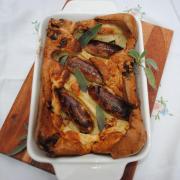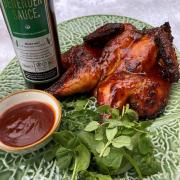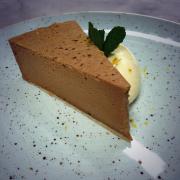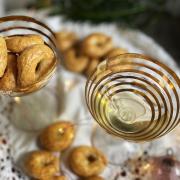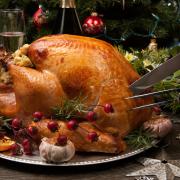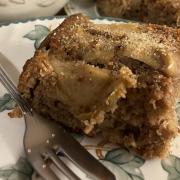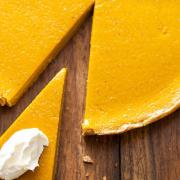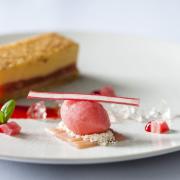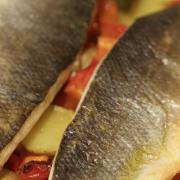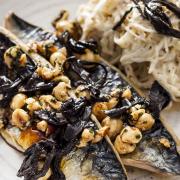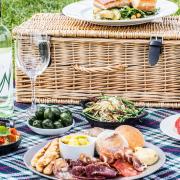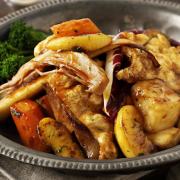Mince pies with Bramley apple from Fourayes Farm
Mince pies with Bramley apple from Fourayes Farm
A Christmas classic, the Garden of England is home to one of the mince pie’s key ingredients: the humble Bramley apple. Fourayes Farm, near Bicknor, specialises in both growing and processing Bramleys for use in mince pies, but the fruit-based mincemeat it produces today would have had a very different emphasis a few hundred years ago.
In the Middle Ages, mince pies were sometimes known as ‘Christmas Pye’ or ‘Crib Pies’and were much bigger than today. Commonly cooked in an oblong dish, it wasn’t unusual to see a baby Jesus doll laid on top!
By the 17th century, having shrunk sufficiently, they were sometimes referred to as ‘Wayfarer Pies’, kept by households as a treat for visitors at Christmas time.
The ingredients have changed as well. As the name suggests, meat was a key feature: anything from rabbit to pigeon might be mixed in with dried fruits and strong spices to create the mince pie filling.
Today, fruit is the core ingredient but, as Phil Acock, managing director at Fourayes Farm, explains: “Many people are unaware that apples are actually a key ingredient in mincemeat. The apple is mixed with dried fruits such as raisins and sultanas and then complemented by various spices, mixed peel, orange oil and spirit vinegar to name a few. The only trace of meat in today’s recipes is the suet – and this is commonly replaced with a vegetarian option.”
Recipe: Mince pies
Makes 24 mince pies
For the mincemeat
225g Bramley apples, cored and cut into small pieces
110g shredded suet
175g raisins
110g sultanas
110g currants
110g whole mixed candied peel, finely chopped
175g soft dark brown sugar
Grated zest and juice of one orange
Grated zest and juice of one lemon
25g whole almonds, cut into slivers
2 teaspoons mixed ground spice
Quarter of a teaspoon ground cinnamon
Pinch of freshly grated nutmeg
3 tablespoons brandy
For the pastry
375g plain flour
165g butter
3-4 tablespoons water
Pinch of salt
Milk
Thoroughly mix the mincemeat ingredients, minus the brandy, in a large bowl. Cover the bowl with a cloth and leave in a cool place overnight. The following day, pre-heat the oven to 120�C. Replace the cloth cover with foil loosely laid on top, and place the bowl in the oven for 3 hours. Once done, remove and allow the mixture to cool, then stir in the brandy
For the pastry, mix the flour, butter and salt, rubbing it together until it resembles breadcrumbs. Gradually mix in enough water to bind the dough. Wrap the pastry in cling film and place in the refrigerator for half an hour
When cooled, roll out the pastry on a floured surface. Cut circles, the appropriate size to fit a patty tin. Cut an equal number of smaller circles as lids. Place the larger circles in the tin and spoon in the mincemeat. Wet the edges of the pastry with water and place on the pie tops, pressing down the edges to seal them. Brush with milk and cut a slit in the top of each pie with a knife
Place in the oven at 200�C for 20-25 minutes, then serve
Top tips
• Using Bramley apples will help to give your mincemeat a firm texture. There’s no need to peel the apples – the skins will add to the flavour
• For mince pies with a kick, mix some brandy in with your filling
• Be creative with alternative toppings for your mince pies. Anything from crumble to meringue can work well
• Or stick with traditional pastry tops and cut them into Christmas shapes for a festive vibe
Did you know?
• Mince pies originated in England
• King Henry V was said to have been a particular fan, indulging in a mincemeat pie at his coronation in 1413
• Oliver Cromwell banned mince pies, along with other Christian traditions, during his time in power in the 1650s



